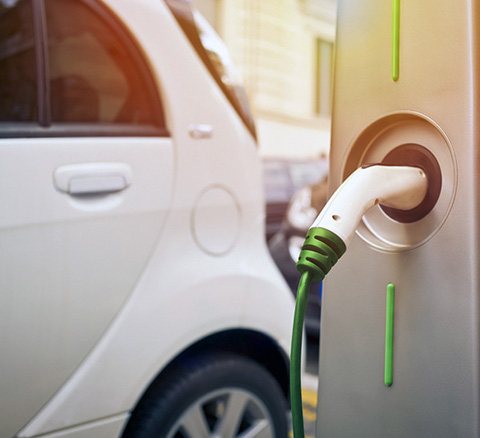Toronto should require property developers to include electric vehicle charging stations in all new residential developments, a group of master’s students at the Munk School of Global Affairs has recommended to city officials. The students, who as part of their course work spent a term researching ideas for how Toronto could reduce its greenhouse gas emissions, also urged City Hall to start replacing its fleet of traditional vehicles with electric ones.
Munk School professor John Robinson, a course supervisor, says the students were asked to develop real-life solutions to a problem supplied by the city – in this case, how to reduce greenhouse gas emissions 80 per cent by 2050. The experience is also designed to help the students, of course. “It’s a chance to explore an interest, to see what it looks like to work in that field and to gain some relevant hard skills along the way,” says Kieran Alkerton, who is in his second year of the program.
Course participants were divided into teams, each of which looked at one angle of the greenhouse gas challenge, such as transportation, energy supply and buildings.
Alkerton’s team looked at encouraging the adoption of electric vehicles. There’s little demand for green cars in Toronto because of their high price, the relatively short distance they can travel between charges and the limited availability of charging stations. Fewer than one in 1,000 passenger vehicles on Toronto roadways are electric.
The team recommended that 20 per cent of new high-rise residential parking spaces be equipped with charging stations. This is the same proportion that Vancouver implemented as a compromise between electric car enthusiasts and condo developers. Students also suggested that the city lead by example, expanding its fleet of electric vehicles from 12 to 138 by 2024. Even then, the green vehicles would represent only a small fraction of the total fleet of 5,000.
Another group of students looked at converting the city’s power sources to renewable energy. They noted that the need to replace 1950s infrastructure creates an opportunity to “optimize the grid” with fresh, green technology, the costs of which could be covered through tax incentives, green bonds and public-private partnerships.
City officials welcomed the students’ reports for providing new research and fresh thinking on an important issue. Mark Bekkering, a manager with the Environment and Energy Office at City Hall who was in charge of matching participants with city employees, says: “These students were given the opportunity to explore ideas in a different way – and they did a great job.”
Recent Posts
U of T’s 197th Birthday Quiz
Test your knowledge of all things U of T in honour of the university’s 197th anniversary on March 15!
Are Cold Plunges Good for You?
Research suggests they are, in three ways
Work Has Changed. So Have the Qualities of Good Leadership
Rapid shifts in everything from technology to employee expectations are pressuring leaders to constantly adapt





